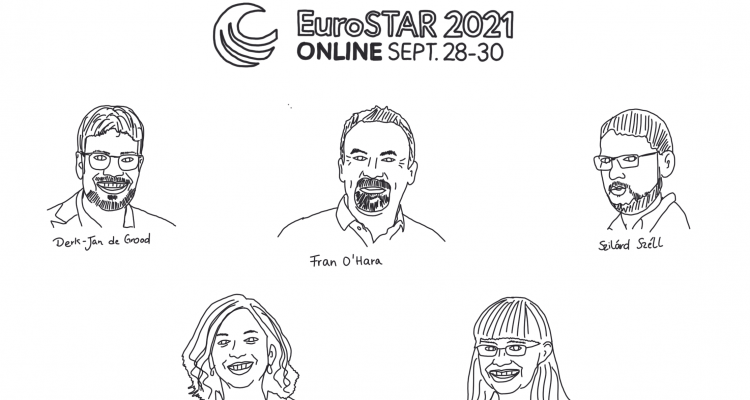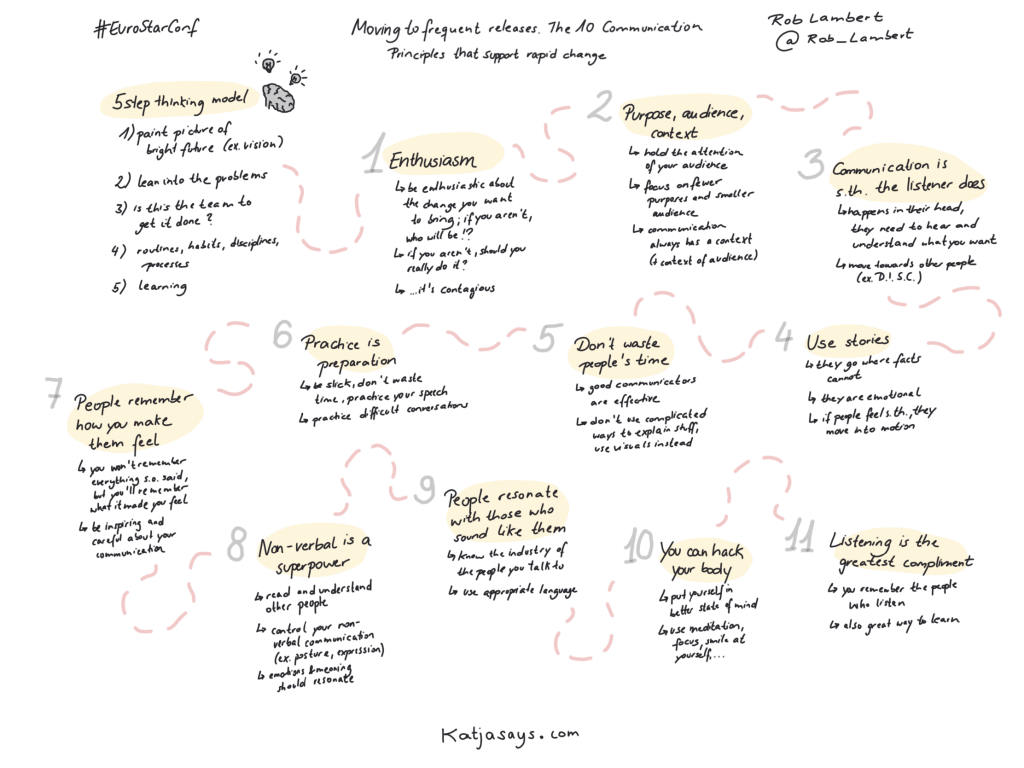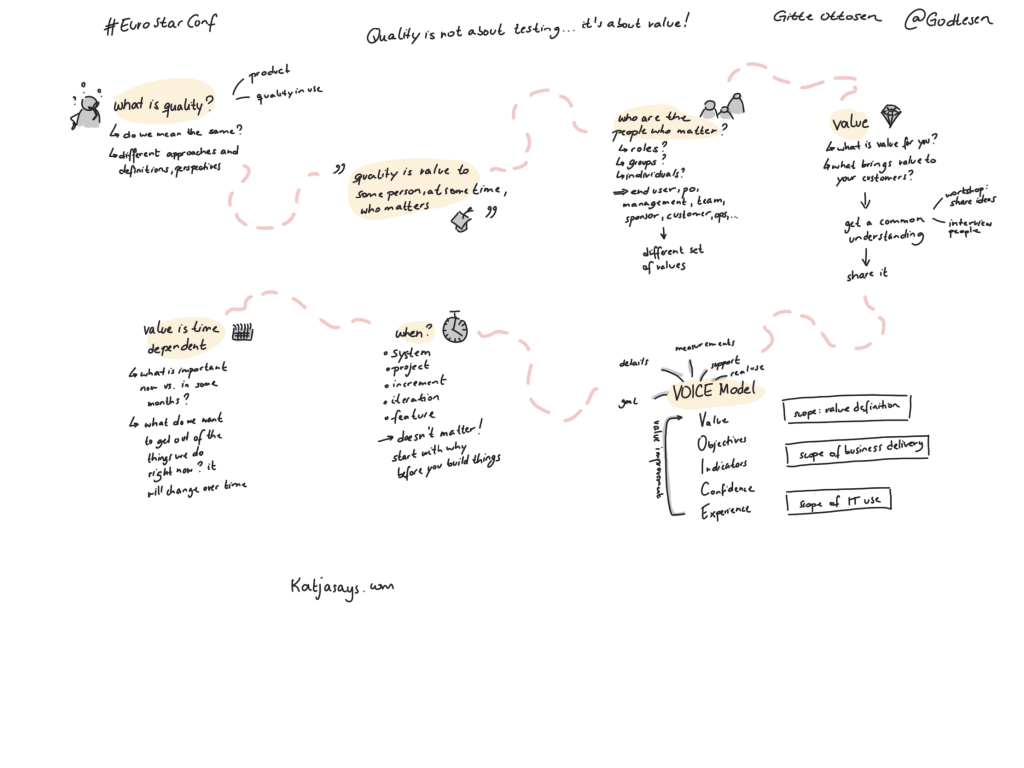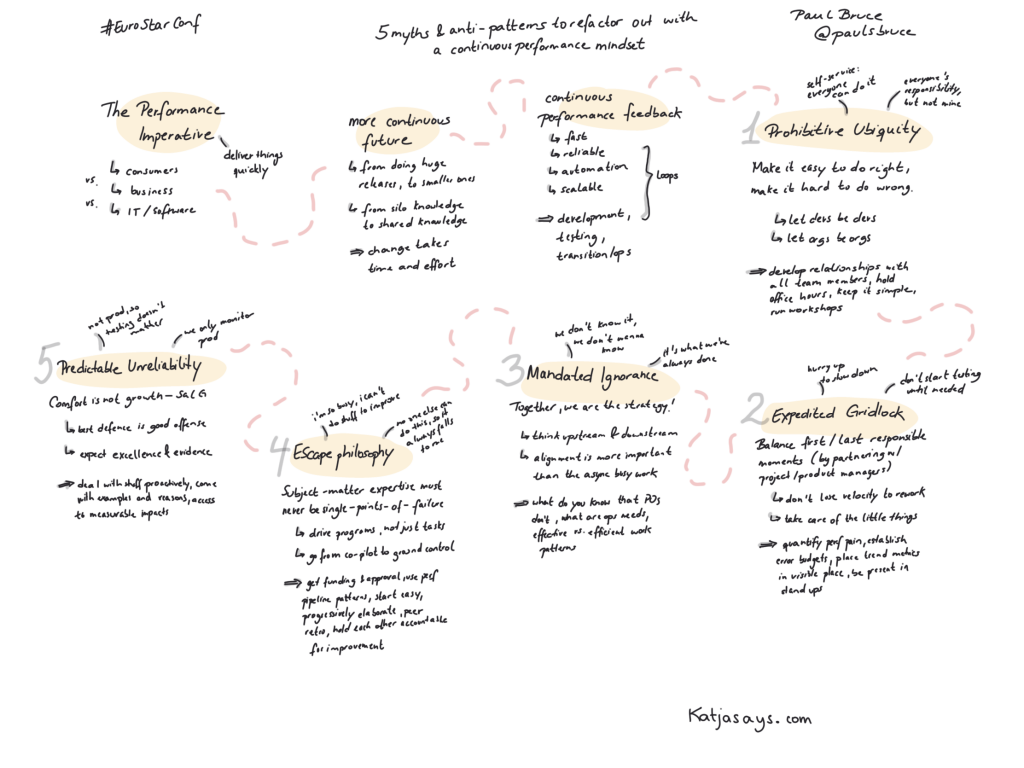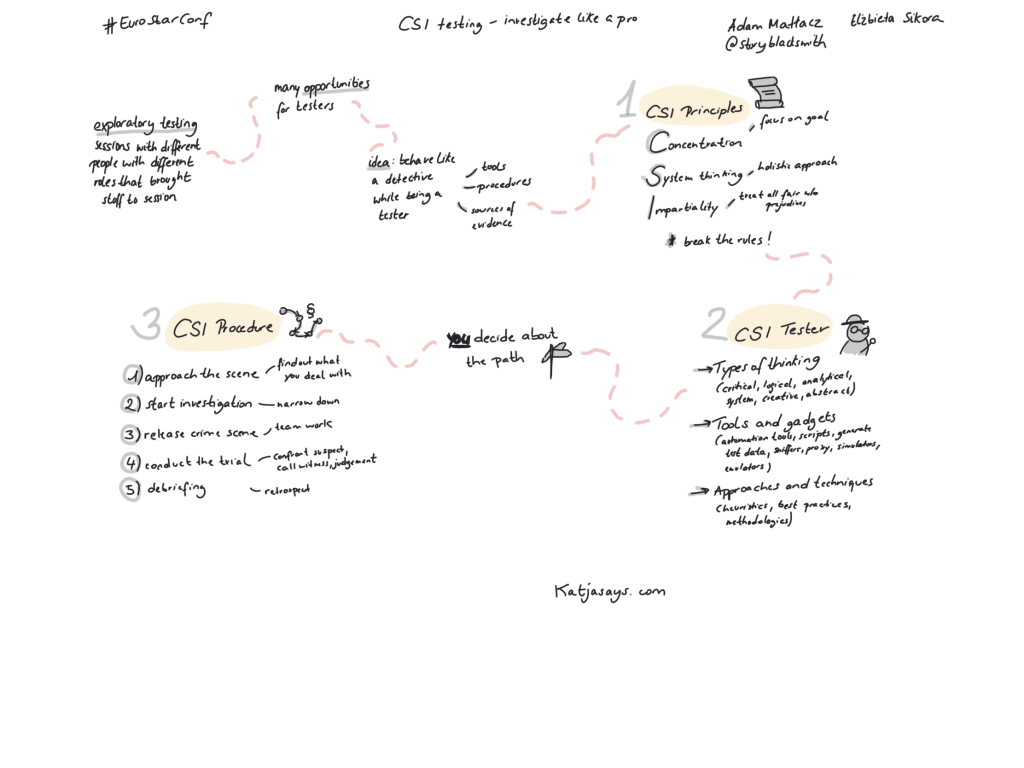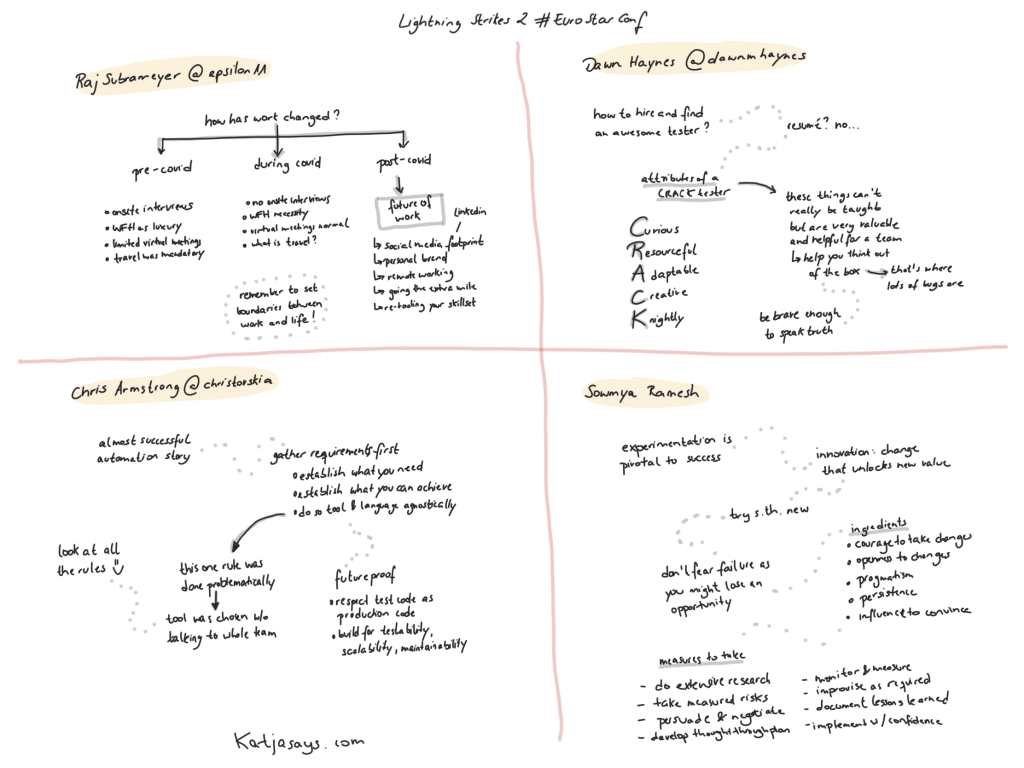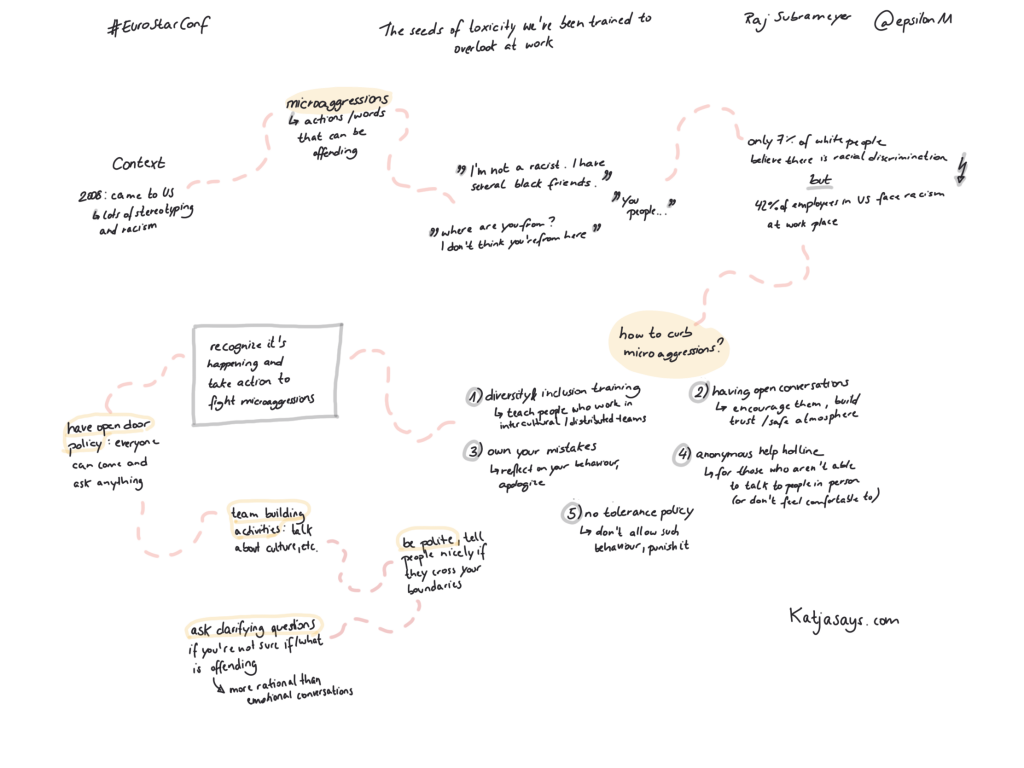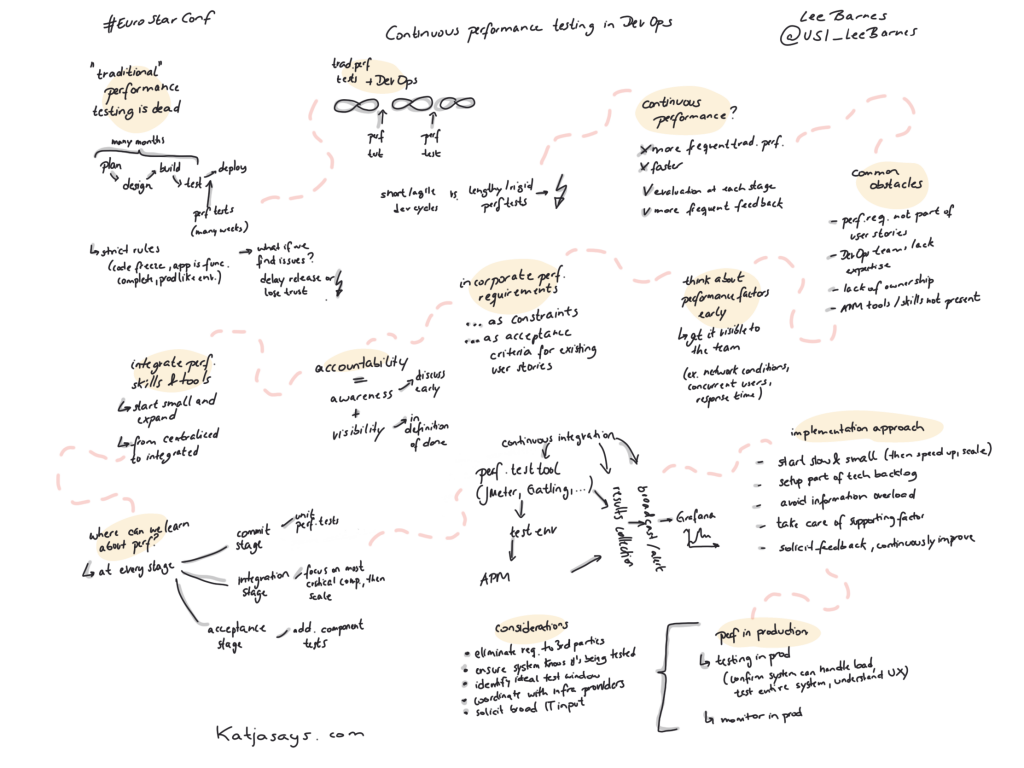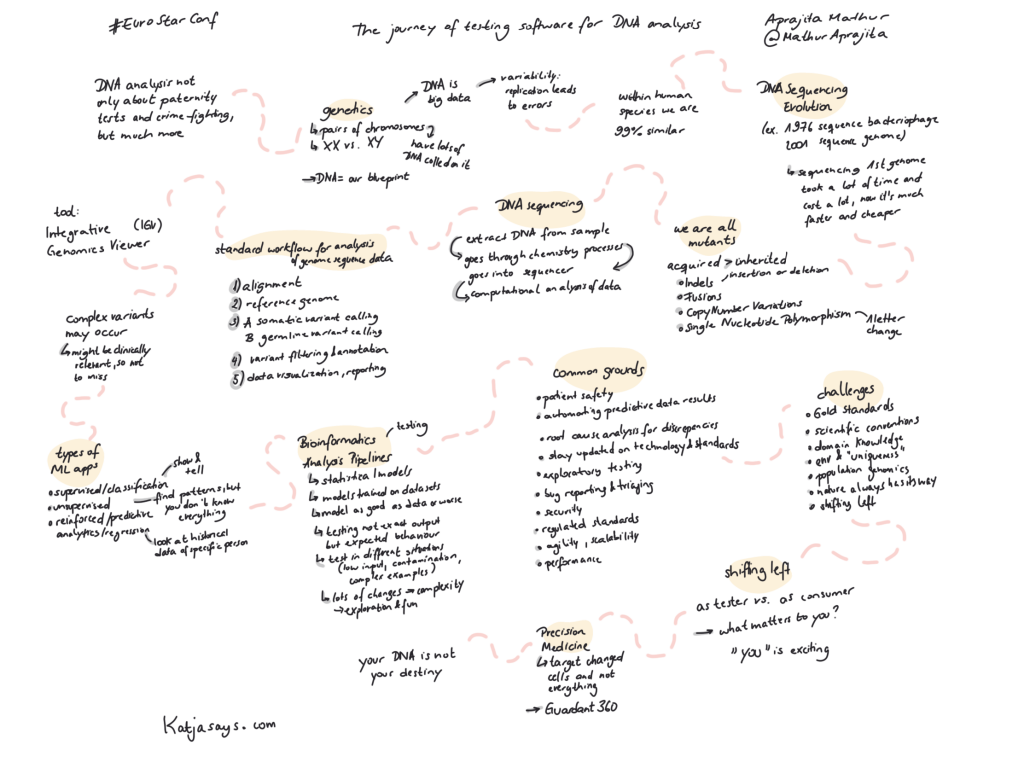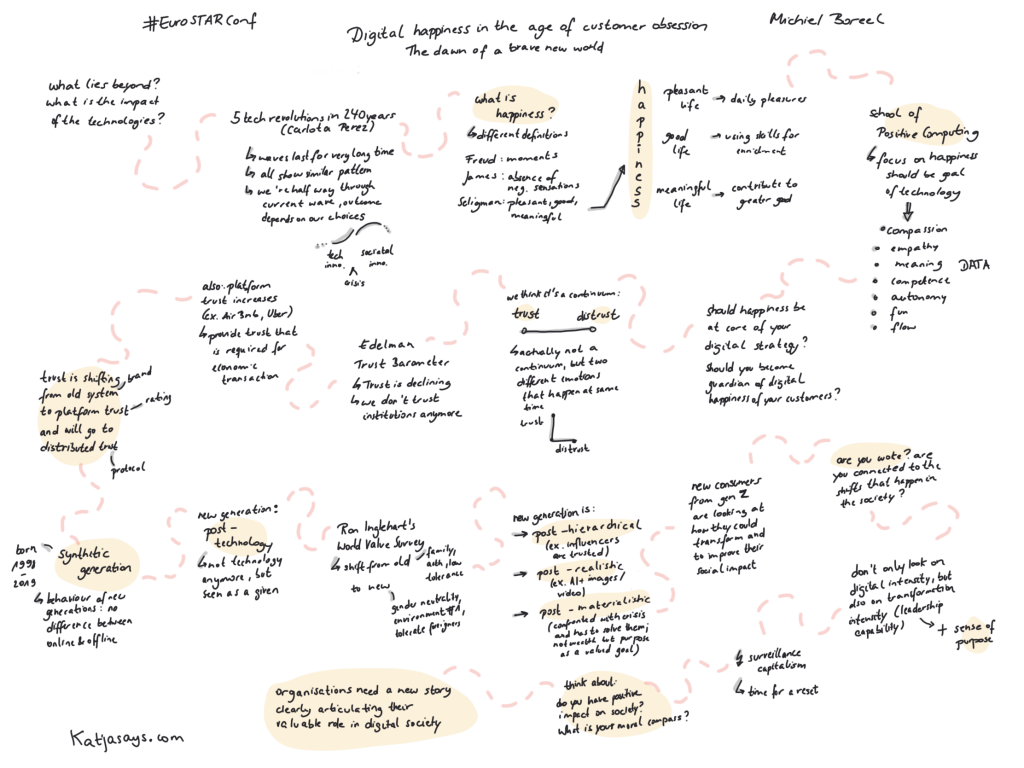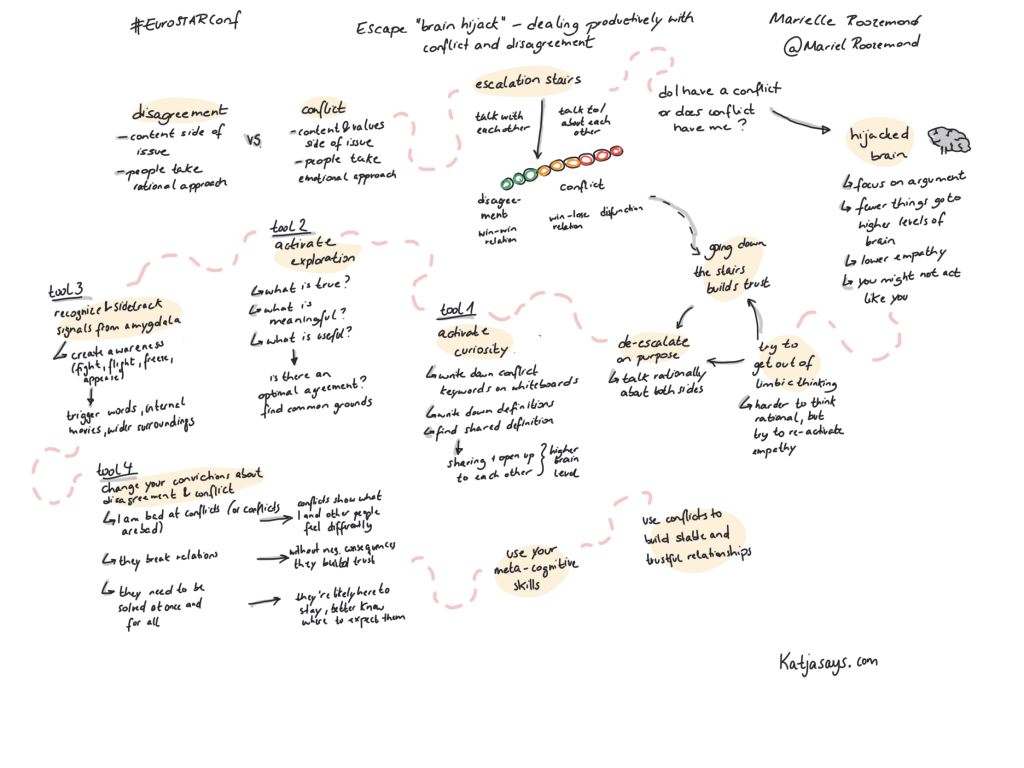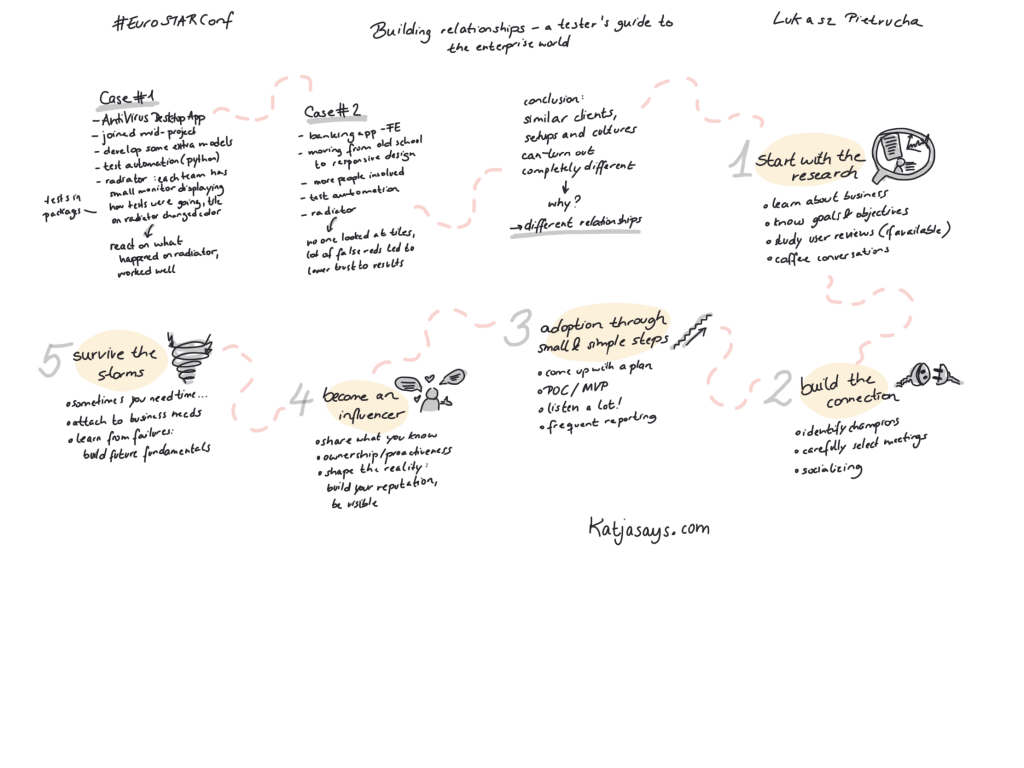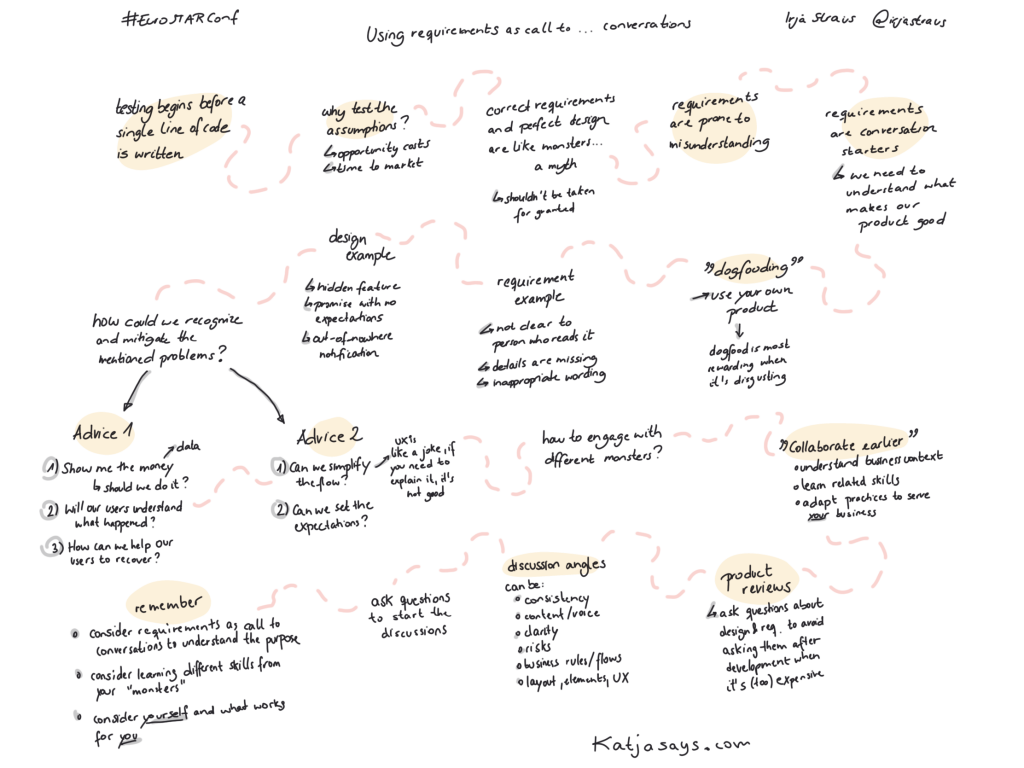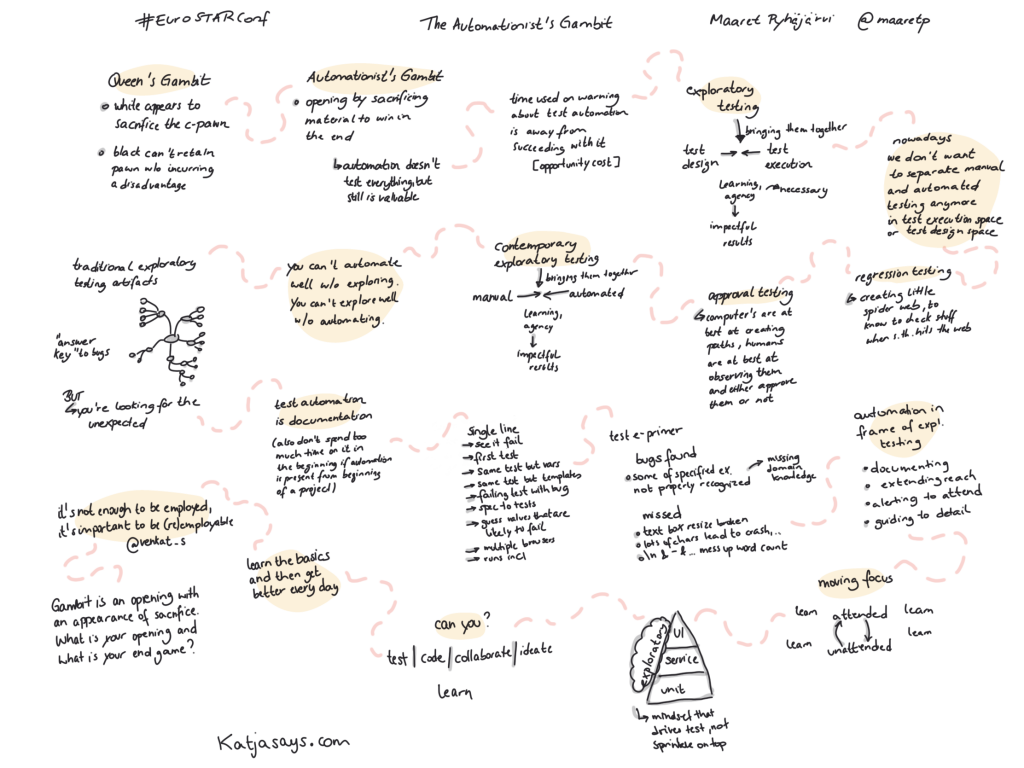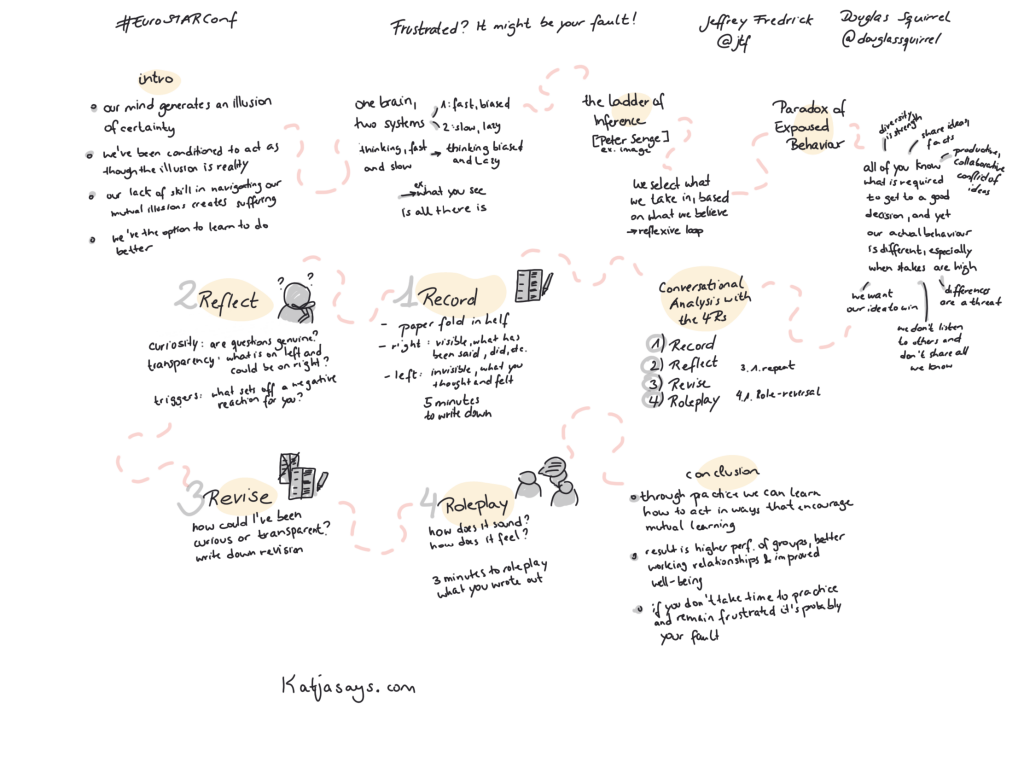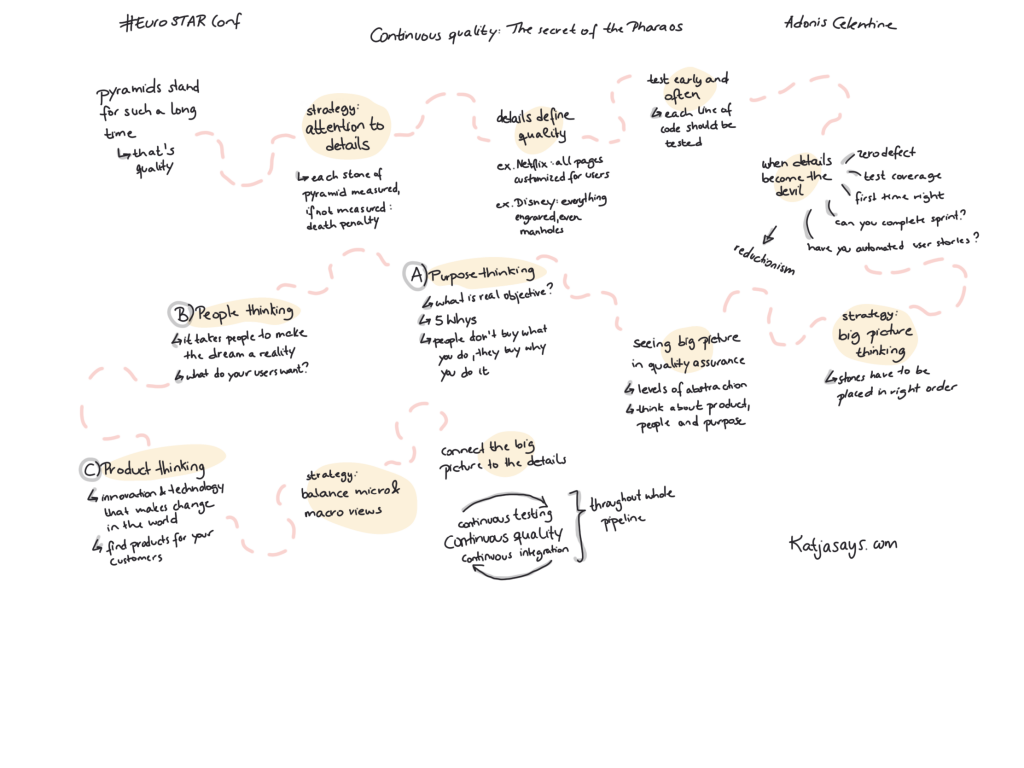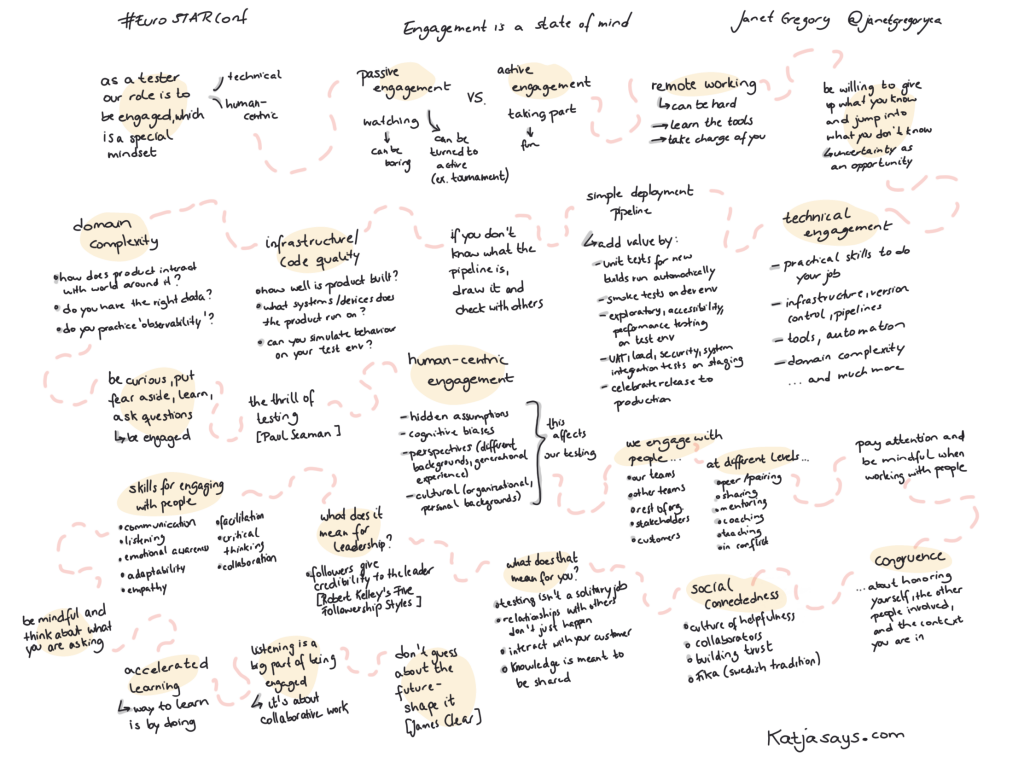EuroSTAR Conf Online 2021 Day 1
Woohoo, finally it’s that time of the year again – the EuroSTAR Conference is on. This year it took place as an online edition which gave people from all around the world the opportunity to take part in this amazing conference without needing to travel during the pandemic times.
Although it is an online edition, there was plenty of space to meet other attendees. You could do a speed meet session and talk to someone randomly for 3 minutes. You could join a lean coffee session and discuss interesting topics. You could get solutions to your problems from the Test Clinic. Or you could check out the demos of the sponsors and stroll through the Expo area.
The Programme Committee around the Programme Chair Fran O’Hara made an amazing job when choosing the speakers for this year’s edition and you could listen to talks from different areas of testing, speakers with different backgrounds and from different cultures. Let me summarize my first day at the EuroSTAR Conference 2021 by using my sketchnotes.
Moving to frequent releases. The 10 Communication Principles that support rapid change.
Rob Lambert
The first keynote of the day was held by Rob Lambert. Rob started by explaining the 5 step thinking model. First, you paint a picture of the bright future (like a vision). Then you lean into the problem and ask if the team is the right one to get it done. Afterward, it’s all about routines, habits, disciplines, and processes, and finally, there is a lot of learning.
He then talked about the 10 (+1) Communication Principles to support rapid change. These are:
- Enthusiasm
- Purpose, audience, context
- Communication is something the listener does
- Use stories
- Don’t waste people’s time
- Practice is preparation
- People remember how you make them feel
- Non-verbal is a superpower
- People resonate with those who sound like them
- You can hack your body
- Listening is the greatest compliment
Quality is not about testing … it’s about value!
Gitte Ottosen
Gitte thinks that is not that easy to define what quality is, as it doesn’t mean the same to everybody. It is the value to some person, at some time, who matters. So you have to find out who the people that matter are.
More important, you have to think about what value means to you and get a common understanding throughout the whole team. You can do so by using the VOICE Model: Value, Objectives, Indicators, Confidence, Experience. As value is time-dependent, you have to think about what you want to get out of the things you do right now – this will change over time.
5 myths and anti-patterns to refactor out with continuous performance
Paul Bruce
Nowadays, organizations want to deliver things quickly. They run into a more continuous future where they do smaller releases more often and share knowledge along the way. This only works if continuous performance feedback is given.
Paul used 5 myths/anti-patterns to explain how to get to having a continuous performance mindset:
- Prohibite Ubiquity
- Expedited Gridlock
- Mandated Ignorance
- Escape Philosophy
- Predictable Unreliability
Have a look at my sketchnote to learn more about the mantra and possible actions for each anti-pattern.
CSI testing – investigate like a pro
Adam Matlacz & Elzbieta Sikora
Adam and Elzbieta think that exploratory testing brings many opportunities for testers, especially when the sessions are held with people with different roles. While being a tester, you can behave like a detective when you are on a bug hunt. That’s how they came up with CSI Testing.
The CSI Principles are Concentration, System thinking, and Impartiality (+ break the rules). Focus on a goal, use a holistic approach, and treat all fairly without prejudices. A CSI Tester should build skills around different types of thinking, tools, and gadgets, and approaches and techniques.
The CSI Procedure would look like that:
- Approach the scene: Find out what you deal with
- Start investigation: Narrow down
- Release crime scene: Team work
- Conduct the trial: Confront suspects, call witnesses, judgement
- Debriefing: Retrospect
Lightning Strikes
Lightning Strikes are short talks of 5 minutes in which 2 slides are allowed. This year there were 8 speakers who were giving a lightning talk.
Lightning Strikes 1
Tariq King, Sanne Visser, Rob Meaney & Elise Carmichael
Tariq thinks that the world is full of bad software and by filling AI & ML systems with bad data and biases, the problem is being made even worse. By testing your software and using a holistic approach, you can unlock a revolution and make a difference.
The essence of Sanne’s talk is, that you should always remember that there are different ways to get to where you want to get and that you should take a look around and think outside the box to not get stuck in the way things should be.
Rob shared two philosophies with us: Seek problems, solve problems share lessons, which is basically about sharing what you’ve learned with everyone and working in a holistic matter to enhance quality. The other one is: Fewer, smaller things together – which means fewer as in the variety/volume of work, smaller as in slicing things down more and together as in cross-functional teams that start and finish together.
Elise thinks that next to maintaining, analyzing, and creating tests there is a huge portion of test debt, a backlog of work not done. She thinks that flipping the test pyramid upside-down helps you to refocus on the customer’s experience and therefore also reducing some of this debt.
Lightning Strikes 2
Raj Subrameyer, Dawn Haynes, Chris Armstrong & Sowmya Ramesh
Raj compared pre- and during covid work to each other and found that from having onsite interviews, working from home as a luxury, limited virtual meetings, and mandatory travel it all transferred to no onsite interviews, work from home as a necessity, virtual meetings as normality and travel not existing anymore. This leads to a huge change in the future of work in which a social media footprint, personal branding, remote working, going the extra mile, and re-tooling your skillset become crucial.
Dawn’s approach to finding and hiring awesome testers is usins these attributes of a CRACK tester:
- Curious
- Resourceful
- Adaptable
- Creative
- Knightly
In short, Chris‘ talk is about not overlooking any rules when doing test automation. A small mistake as letting someone and not the whole team decide on which tool to use might turn into a huge problem.
Experimentation is pivotal to success. Sowmya encourages us to be open to changes so that we don’t lose any opportunities. But while experimenting, you should not forget to do extensive research, monitor and measure, improvise as required, document the lessons learned, and implement with confidence.
The seeds of toxicity we’ve been trained to overlook at work
Raj Subrameyer
Raj has been dealing a lot with stereotyping and racism himself – mostly microagressions (actions/words that can be offending). He discovered that those often appear at work places and should definitely be fought. He has 5 proposals on how to curb microagressions:
- Diversity & inclusion training
- Having open conversations
- Own your mistakes
- Anonymous help hotline
- No tolerance policy
Continuous performance testing in DevOps
Lee Barnes
Traditional performance testing, which often comes too late and takes too long, is dead. Continuous performance, which means evaluation at each stage and more frequent feedback, is uprising. But you have to think about performance factors early on in your development process. Incorporate the requirements as constraints or/and as acceptance criteria for existing user stories.
Lee advises us to start small and expand to move from a centralized to an integrated performance team. Gather feedback and continuously improve.
Testing and monitoring in production is important, but don’t forget to consider to:
- eliminate requests to 3rd parties
- ensure system „knows“ that it’s being tested
- identify an ideal test window
- coordinate with infrastructure providers
- solicit broad IT input
The journey of testing software for DNA analysis
Aprajita Mathur
The last keynote of the day was held by Aprajita Mathur. She was talking about testing software for DNY analysis. The standard workflow for analysis of genome sequence data is:
- Alignment
- Reference Genome
- A) Somatic or B) Germline variant calling
- Variant filtering & annotation
- Data visualization & reporting
Machine learning applications help testing and can be supervised, unsupervised or predictive. While testing – also called Bioinformatics Analysis Pipelines – keep in mind:
- Statistical models are used
- The models are trained on data sets
- The model is as good as the data or worse
- You aren’t testing the exact output, but expected behaviour
- You have to test in different situations
- There are lot of changes, which lead to complexity, but also exploration and fun
Between testing software for DNA analysis and „normal“ software testing, there are a lot of common grounds. But to DNA analysis, there are also some challenges as Gold Standards, domain knowledge, population genomics, and that nature always has its way.
As you can see, on the first day there were a lot of different topics already. From communication principles over performance testing and racism at work to testing software for DNA analysis – that’s what I call a huge variety. And there are so many talks that I haven’t attended and might re-watch after the conference.
EuroSTAR Conf Online 2021 Day 2
Wow, the last day of the 2021 edition of the EuroSTAR Conference was over in a blink. There were also offered several side events that took place in between the conference talks like tool demos, AMAs, and a feedback round at the end of the day.
A special program point was the EuroSTAR 2021 Software Testing Awards ceremony. Here the winners of the awards for Best Tutorial, Best Conference Paper, and the 2021 EuroSTAR Testing Excellence Award have been announced.
And last, but not least, the program committee and location for the 2022 edition of the EuroSTAR Conference have been presented. Copenhagen in summer – how cool is that?
But now, let me show you my sketchnotes of the day and do a quick summary of the talks.
Digital happiness in the age of customer obsession
Michiel Boreel
As the world is constantly changing and with it the people and their needs, opinions and mentality, Michiel wanted us to think more about Positive Computing. Focusing on happiness as a goal of technology.
We tend to think that from trust to distrust it’s a continuum, but actually, they are two different emotions that happen at the same time. Overall, trust is declining. We don’t trust organizations anymore. Also, platform trust increases (ex. Airbnb, Uber) as these platforms provide the trust that is required for the economic transaction.
People born from 1998 to 2019 build the new synthetic generation. These people don’t see a difference between online and offline. They are:
- Post-technological: it’s not an innovation anymore, but seen as given
- Post-hierarchical: they trust influencers more than companies
- Post-realistic: with AI working on images and videos, reality can be altered
- Post-materialistic: they are confronted with a crisis and want to solve the issues. Now not wealth but purpose is a valued goal
Companies have to ask themselves if they are woke – are they connected to the changes that happen in society? How can you transform and get a sense of purpose? Organizations need a new story clearly articulating their valuable role in a digital society.
Escape „brain hijack“ – dealing productively with conflict and disagreement
Marielle Roozemond
First, let’s define disagreement and conflict. Disagreements are about the content side of issues and people take a rational approach to them. Conflicts are about the content and the values side of issues and people take an emotional approach to them. Going up the escalation stairs, it’s not a very long way from win-win situations over win-lose situations to disfunction.
A highjacked brain focuses on the argument while fewer things get to the higher levels of your brain. You have a lower empathy and you might act not like you. If so, you need to try to de-escalate on purpose and to re-activate thinking with the higher levels of your brain.
Marielle proposed 4 tools to do so:
- Activate curiosity
- Activate exploration
- Recognize and sidetrack signals from amygdala
- Change your convictions about disagreement and conflict
Building relationships. A Tester’s Guide to the enterprise world
Lukasz Pietrucha
Building relationships is crucial, not only, but especially when working as a tester. Lukasz has a 5 pillar concept that he presented to us:
- Start with the research: learn about business, know goals & objectives, study user reviews
- Build the connection: identify champions, carefully select meetings, socializing
- Adoption through small and simple steps: come up with a plan, POC/MVP, listen a lot, frequent reporting
- Become an influencer: share what you know, ownership/proactiveness, shape the reality – build your reputation, be visible
- Survive the storms: sometimes you need time, attach to business needs, learn from failures – build future fundamentals
Using requirements as call to … conversations
Irja Straus
Testing begins before a single line of code is written. Testing assumptions can be helpful to determine opportunity costs and time to market. Keep in mind that correct and perfect requirements are a myth, they are prone to misunderstanding. BUT: They are a great conversation starter.
Irja likes to use „dogfooding“ to get to the ground of the requirements – this basically means using your own product. The more disgusting it is, the more rewarding it gets, as you can discover more problems along the way.
Ask yourself if you have enough data that shows, that you need to build a certain feature. Will users understand what is happening and if not, how can we help them recover in case of failure? Try to simplify the workflow and think about if you could set the expectations.
A good approach is to collaborate earlier. Understand the business context, learn related skills, and adapt practices that serve YOUR business. A good way of doing this is by doing product reviews. Ask the questions about design and requirements to avoid asking them after development when it’s too late/expensive to change anything.
Irja wants us to remember the following 3 things:
- Consider requirements as call to conversations to understand the purpose
- Consider learning different skills from your „monsters“
- Consider YOURSELF and what works for YOU
The Automationist’s Gambit
Maaret Pyhäjärvi
Some time ago Maaret learned about the Queen’s Gambit – a chess move in which white appears to sacrifice the c-pawn but then black not being able to retain pawn without incurring disadvantage in the end. She then thought about the Automationist’s Gambit – opening by sacrificing material to win in the end. Automation might not test everything, but still, be very valuable. Even if at first your automation tests aren’t perfect, start small, learn the basics and then get better every day.
Traditionally test design and test execution as well as manual and automated tests were seen as separate things. With (contemporary) exploratory testing this has changed. In test execution a good example is regression testing: automation serves as a little spider web and if something hits the web, you can manually check that part. For test design approval testing is a good example: the computer, the automation, creates the paths, and the human, manually, observes them and either approves or diapproves these paths. So you can’t automate well without exploring. You can’t explore well without automating.
Test automation in the frame of exploratory testing can serve for:
- documenting
- extending reach
- alerting to attend
- guiding to detail
Frustrated? It might be your fault!
Jeffrey Fredrick & Douglas Squirrel
Our mind generates an illusion of certainty. We’ve been conditioned to act as though the illusion is reality. Our lack of skill in navigating our mutual illusions creates suffering. We have the option to learn to do better. All of us know what is required to get to a good decision, and yet our actual behavior is different, especially when stakes are high. We want our idea to win, we see the difference as a threat and we don’t listen to others and don’t share all we know.
Jeffrey and Douglas presented the 4R Model for Conversational Analysis:
- Record: fold a paper in half – on the right side write down the visible part of the conversation, on the left side write down the invisible part, meaning your thoughts and feelings
- Reflect: Be curious and ask if your questions are genuine, be transparent and think about what things from the left side could be on the right, and think about the triggers that set of a negative reaction for you
- Revise: How could you’ve been curious and transparent – write down a revision
- Roleplay: Roleplay your revision and see how it sounds and feels
Through practice, we can learn how to act in ways that encourage mutual learning. The result is the higher performance of groups, better working relationships, and improved well-being. If you don’t take time to practice and remain frustrated, it might be your fault.
Continuous quality: The secret of the Pharaos
Adonis Celestine
When thinking about pyramids, it is astonishing that they are still standing, even after such a long time. This is because of their great quality. Adonis talked about the strategies of the pharaohs and what we can learn from them for building continuous quality into our products.
The first strategy is attention to detail. The pharaohs measured all stones, each and every one. Details define the quality, like Netflix customizing their pages for their users or Disney even engraving manholes in their parks with their logo. But details can also become the devil. Think about things like zero-defect strategy, doing it right the first time, test coverage, questions about if the sprint can be completed or if the user stories have been automated.
The second strategy is thinking about the big pictures. The stones of a pyramid have to be placed in the right order. In quality assurance you have to use the following types of thinking:
- Purpose thinking: what is the real objective, ask the 5 whys – people don’t buy WHAT you do, they buy WHY you do it
- People thinking: it takes people to make the dream a reality, so think about what your users want
- Product thinking: what is the innovation and technology that makes a change in the world, you have to find products for your customers, not customers for your product
And the last strategy is to balance micro and macro views, meaning connecting the big picture to the details throughout your whole pipeline.
Engagement is a state of mind
Janet Gregory
The final keynote of the EuroSTAR Conference 2021 was held by Janet Gregory. She thinks that as a tester our role is to be engaged, which requires a special mindset. There is passive and active engagement, watching vs. taking part. Use uncertainty as an opportunity to grow.
Technical engagement is about practical skills to do your job, infrastructure, pipelines, tools, automation, and domain complexity. Ask how well your product is built, what system/devices it runs on if behavior can be simulated, how the product interacts with the world around it. Ask if you have the right data and if you practice observability.
In human-centric engagement, there are hidden assumptions, cognitive biases, different perspectives, and cultures and all this also affects our testing. We engage with people like our teams, other teams, stakeholders, or customers at different levels like sharing, mentoring, teaching, or in conflict. Therefore we need to pay attention and be mindful when we work with people. Honor yourself, the people involved and the context you are in.
To be socially connected, you need a culture of helpfulness, collaborators and to build trust. As a tester you have to remember that testing isn’t a solitary job, relationships with others don’t just happen, you need to interact with your customer, and that knowledge is meant to be shared.
So the skills for engaging with people are:
- communication
- listening
- emotional awareness
- adaptability
- empathy
- facilitation
- critical thinking
- collaboration
I can’t believe the EuroSTAR Conference 2021 is already over. Hopefully, I’ll get the chance to attend the next edition and once again share my sketchnotes with all of you.

